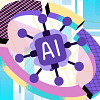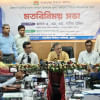Teaching in the age of AI

Every new wave of technology presents a new generation of educators with the difficult challenge of adapting their methods of instruction to fit new automation, the implications of which may or may not be fully understood by the public yet.
With the public launch of ChatGPT at the end of 2022 – followed in quick succession by the launch of other predictive language models – universities face the greatest challenge of our lifetimes: how to adapt to a classroom where every student has the ability to generate their homework in a couple of seconds.
Educators and institutes have chosen to respond to this development in a number of ways. Blanket bans on using AI for coursework seem to be the way to go, with many educators choosing to state this policy in their syllabus to set the tone at the beginning of the semester.
Other educators have chosen to be more pragmatic and changed the nature of their assignments in response to AI. Some teachers are of the opinion that we cannot assign any written take-home tasks out of fear of plagiarism. Essays, reports, and written assignments have been replaced with oral presentations and in-class group activities. While these methods are excellent learning tools in their own right, I am not of the belief that they can be a complete alternative to all take-home written assignments.
The larger industries, which students will graduate to enter, have not changed as much as students would like to believe. Academia and graduate school are still functioning on the basis of published papers, and will continue to do so for the foreseeable future. Corporate jobs still require employees to compile reports and create projections they cannot cite AI for.
While menial parts of these tasks, such as proofreading or sorting data, can be assigned to AI without a supervisor being any wiser, graduates will still need to possess a similar skill set as those who graduated five years ago to perform tasks in a field of their choosing. Therefore, assignments such as essays, reports, and student papers are crucial to help build those skills during undergraduate years to ensure that students can make a smooth professional transition.
Yet, it is very naive to expect a majority of students to put in a decent amount of effort with ChatGPT at their disposal. Even instructions for a simple ungraded brainstorming activity during class are followed by students whipping out their cellphones to ask ChatGPT for talking points, refusing to even ponder on the question for a minute. This has naturally led to many educators feeling frustrated. It is disheartening to sit down to grade an assignment and slowly realise one has been reading through AI-generated work, which can feel like a waste of one's time.
Some students also take the help of AI to study for exams. Instead of reading through material and attempting to understand it, many students choose to simply feed their assigned readings to the application and ask for brief summaries in easy language. The fall of critical thinking skills and creativity in students is frustrating to deal with as an educator. Perhaps our approach can be to engage them with the material as much as possible to push them to learn.
In-class group discussions and planning sessions for projects can ensure students attempt to think about their assigned task and come up with a work plan for themselves. For more rigorous assignments, I require students to meet me in person multiple times, where they show and discuss progress and challenges to ensure they are working on the task throughout the time leading up to the deadline. It is also a good way to ensure that they are aware of what to do in each stage, instead of simply having a ready product before the deadline.
Educators can also require a lot of supplementary materials to be submitted with the main assignment, which can vary depending on the nature of the task. Handwritten notes written by each group member to ensure group meetings have taken place, field notes, photos of site visits, transcripts of interviews taken, and audio recordings are among other ways of asking students to document their work throughout a project.
Finally, I follow up submissions with a presentation or viva where students have to explain their project and be able to answer questions about their process, findings, and decisions taken. Afterwards, skim reading a submission can tell you about the quality of a project, but I avoid questioning assignments at a word level because it is not a productive use of one's time.
A less robust level of effort during grading is acceptable if most of the effort of the educator goes towards overseeing the planning and undertaking of the project to ensure students are engaged from the beginning. Additionally, most university courses have midterms, final exams, quizzes, and other methods of assessment; thus, an assignment is unlikely to be the only determinant of a student's grade to begin with.
None of these measures are, of course, foolproof, and it could still be possible for students to improve their grades by using unethical means. It is tragic when students who use AI are graded better than those who choose to be ethical and submit an inferior product. Educators have a very tricky challenge in evaluating student work.
However, policing the use of AI is difficult and can feel fruitless, especially with newer advancements making it increasingly difficult to detect AI when reading. The pace of new technology is difficult to keep up with, and drastically changing the syllabus can be beyond the scope of a single educator. Since it often appears that those who create new technology don't consider the social or ethical ramifications of their creations, individuals with limited resources are left scrambling to find solutions to wide-scale problems.
There may not be a perfect solution to this technology, which is understandably so attractive to students, but perhaps some of the methods outlined above can be a temporary fix. As fast as AI applications are evolving, we will need to find new solutions as we go and not get too comfortable with any temporary fixes. As educators, we need to be alert and maintain open dialogue with colleagues and fellow educators to share strategies and experiences to make sure teaching is the group effort that it can benefit from being.
Mrittika Anan Rahman is a lecturer in the Media, Communication and Journalism programme at North South University, Dhaka.

 For all latest news, follow The Daily Star's Google News channel.
For all latest news, follow The Daily Star's Google News channel. 








Comments